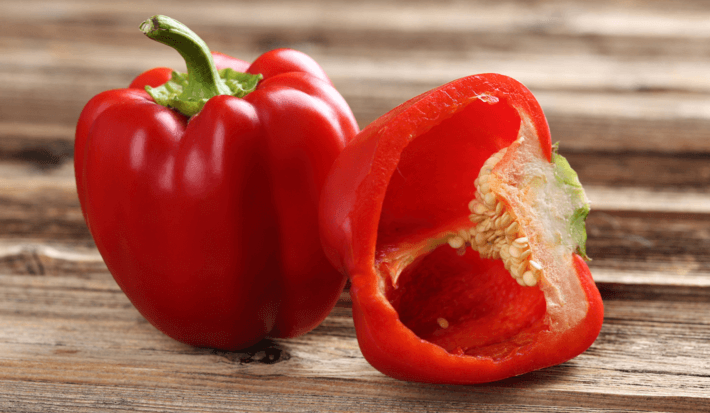Variety Of Peppers

|
Aji : (Capsicum baccatum) |
Aji is the general term for Capsicum in South America. Archeological evidence from Peru indicates that Aji was cultivated as early as 2500 B.C. There are three varieties of Aji; 1. Capsicum baccatum var. baccatum 2. var. pendulum, and 3. var. microcarpum. |
| Ancho-Poblano: | The earliest Poblano forms were probably cultivated in pre-Columbian times, and the present varieties are at least a century old, attesting to their popularity in the cooking of Mexico. |
| Bell: | The blocky pods of this type are shaped like bells. The first mention of this capsicum occurred in 1681 when the English pirate Lionel Wafer wrote of them growing in Panama. |
| Cayenne: | This type was named after either the city of Cayenne or the Cayenne River, both in French Guiana. |
| Cherry: | The pods of this type resemble cherries. It is mentioned in botanical literature as early as 1586 and was illustrated in Besler's Celeberrimi Eystetensis, an herbal published in 1613. |
| de Arbol: | The name means "tree-like". Chili-de-Arbol was mentioned by Francisco Hernandez in 1615. |
| Exotics: | The pods are usually variations on Piquin or Cayenne. The Santaka and Hontaka varieties are very similar to types of Piquins with elongate pods. |
| Habanero: | Capsicum chinese. The word in Spanish means from Havana. An intact fruit of a small domesticated Habanero was found in Pre-ceramic levels in Guitarrero Cave in the Peruvian highlands and was dated to 6500 B.C. |
| Jalapeno: | Named because of its association with the Mexican city of Xalapa in Veracruz, where it was grown in ancient times. There are four Mexican types: 1. Tipico, 2. Peludo, 3. Espinalteco, and 4. Morita. |
| Mirasol: | It appears to be a Mexico native and there are several varieties: 1. Cascabel, Guajillo, Loretto 74, and Real Mirasol. |
| New Mexican: | Formerly called Anaheim. The predecessors of the New Mexican varieties. |
| Ornamental: | They are primarily used for ornamental rather than culinary use, however they are edible. |
| Pasilla: | It means little raisin in Spanish. |
| Piquin: | The wild form of this capsicum, variously called chiltepin and chiltecpin. The Piquins were part of the prehistoric migration of Capsicum annuum from southern Brazil or Bolivia and north to Central America and Mexico. Ethnobotanists believe that birds were responsible for the spread of most wild capsicums. |
| Rocoto: | Capsicum pubescens. From the Andean origin, the Rocoto was introduced into the mountainous regions of Chiapas and Michoacan, Mexico, in the early part of the twentieth century. |
| Serrano: | It was grown in the mountains of northern Puebla and Hidalgo, Mexico. The longer Serranos, called Largo, are not as common as the shorter varieties. In addition to Largo variety, there are; 1. Balin, 2. Tipico, 3. Altamira, 4. Panuco, 5. Tampiqueno, and 6. Hidalgo. |
| Tabasco: | The name is derived from the Mexican city of Tabasco, which had extensive trade with New Orleans during the 1850's. |
| Hungarian Yellow Wax: | This capsicum was developed from the Banana pepper, which was introduced into the United States from Hungary in 1932. |
| Astrahan and Harkov: | Ukrainian species |